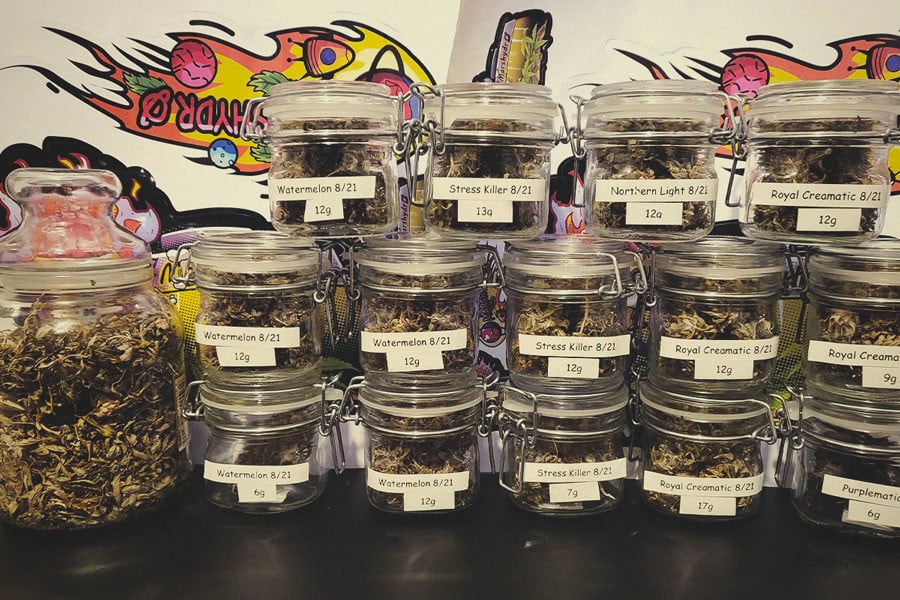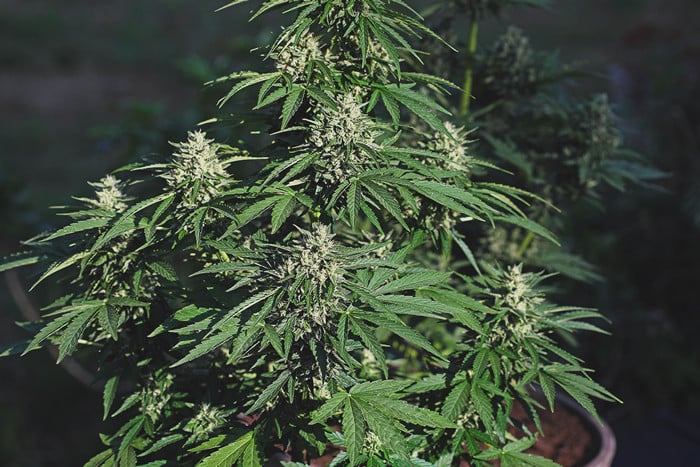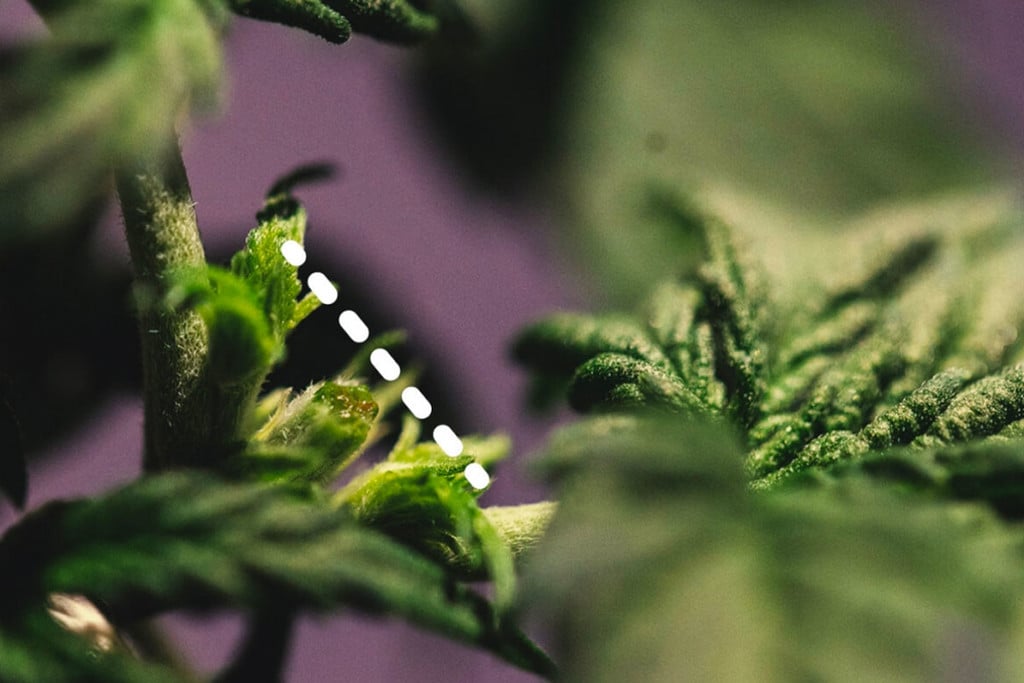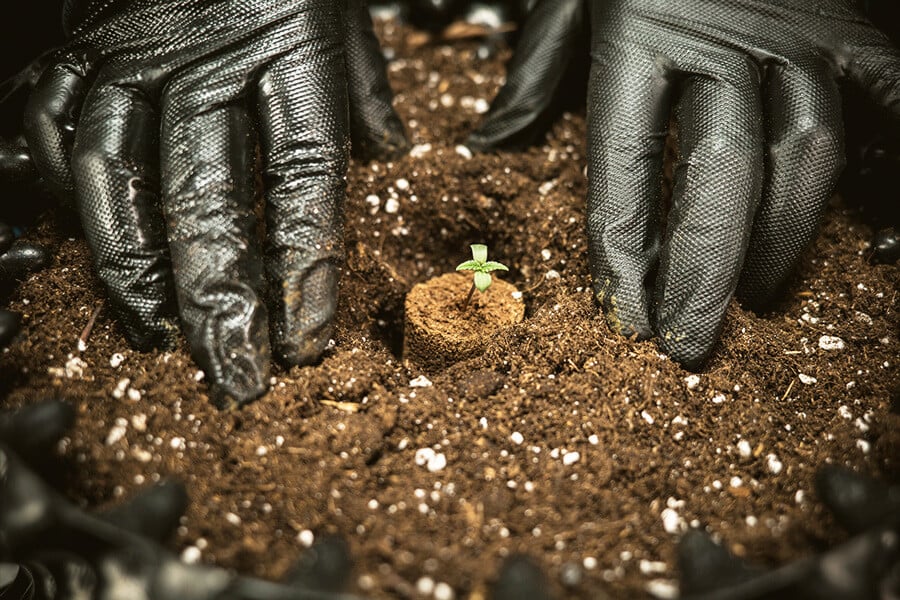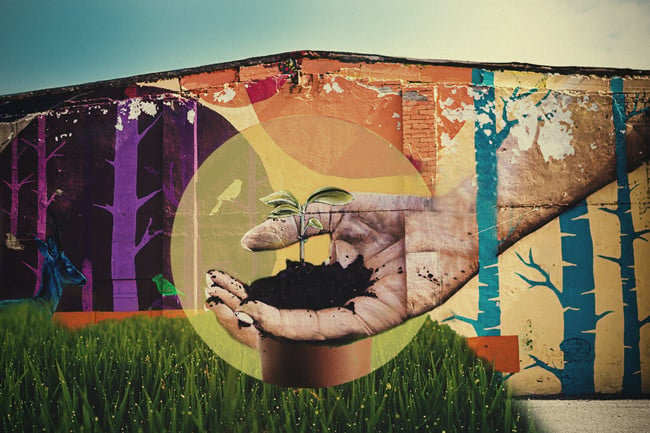.
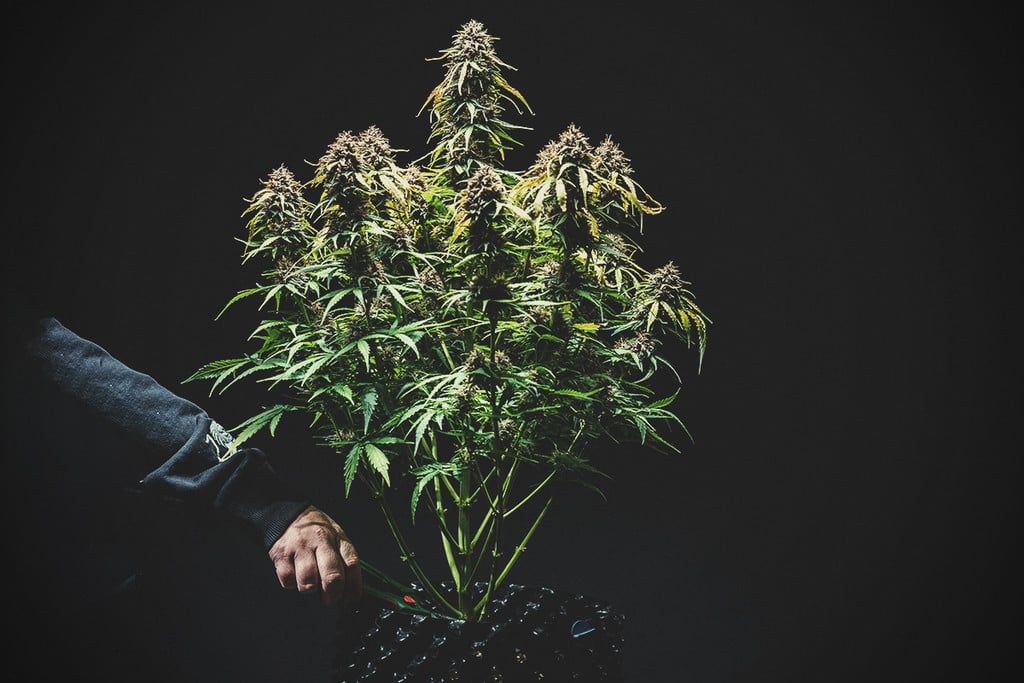
When to Harvest Autoflower Cannabis
Harvesting isn't as simple as chopping branches and hanging your buds to dry when you feel like it. You need to exercise proper timing to make sure your flowers are perfectly ripe. In this article, you'll discover what harvest signs to look out for, the timeline for the average auto, and details on each key stage of growth.
Contents:
Harvest time. It sounds simple, right? While chopping branches doesn’t take much brainpower, timing the event perfectly does. To get this right, you’ll need to know the difference between harvesting autoflowering and feminised strains, as auto’s flower significantly quicker. If you act too early or too late, you risk settling for suboptimal cannabinoid and terpene profiles.
Use the guide below to hit the nail on the head when it comes to harvesting your autoflower cannabis plants.
How to Tell if My Autoflower Is Ready for Harvest
You’ve successfully raised a small seedling into a healthy and productive specimen with a canopy full of buds. But when should you harvest these glistening flowers? Luckily, there are a few telltale signs you can rely on to make sure you act at the right time. You’ll need to keep an eye on trichome and pistil colour, how your leaves look, and consider how long your plants have been in the soil. We’ll cover all of this, in depth, below.
-
Average Life Cycle
We get a lot of questions here at Royal Queen Seeds, but one of the most common is something along the lines of: “How do I know if my autoflower is ready for harvest?”.
To start, we always recommend cultivators keep track of their plants using a grow planner. Not only does this handy piece of kit allow you to record any important observations, but it enables you to keep dates in a neat and tidy place. Knowing when you sowed/germinated means you’ll have a good idea of the age of your plant going forward. Why is this important? Because it will give you the first vital indication of when to harvest your autoflowers.
Whenever you purchase autoflower seeds from a reputable seed bank, you’ll have access to a data sheet that tells you the average life cycle of the strain—i.e. the time it takes to go from germination to harvest. Let’s take Watermelon Automatic for example. This flavourful cultivar reaches harvest around 8–9 weeks following germination. Keeping this general timeline in mind, the other factors below will help you further hone in on the optimal harvest time.
Free Pro
Harvest Guide!
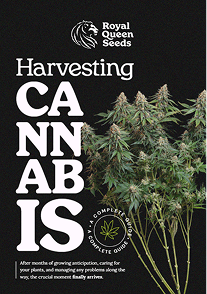
-
Trichomes
Trichome colour serves as arguably the most accurate indicator of a cannabis plant’s maturity, and is an easy and reliable way to determine when to harvest.
If you’re not aware, trichomes are the tiny glistening, mushroom-shaped glands that cover cannabis buds. These jewel-like structures manufacture cannabinoids and terpenes (the molecules that endow cannabis with its effects, smells, and tastes) in the form of a viscous resin.
Trichomes appear translucent throughout most of the flowering stage, but turn cloudy and eventually amber around harvest time. Far from just a mere colour change, this shift signifies the changing chemical composition within these bulbous glands. Using a microscope or jeweller's loupe, you can take a closer look at your trichomes to make an informed decision about when to harvest. Here’s what to look out for:
- Clear trichomes: Clear trichomes are a sign of immature flowers with suboptimal cannabinoid profiles—don’t pull the trigger just yet!
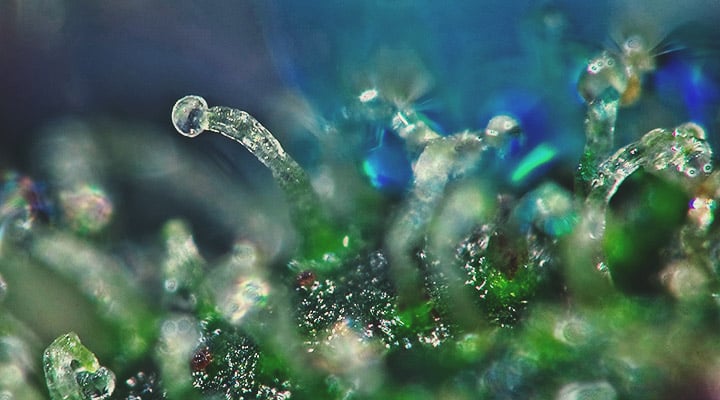
- Cloudy trichomes: Milky and opaque trichomes are a surefire sign that these glands are loaded with THC; now’s a good time to start cutting your flowers if you’re seeking a potent and cerebral high.
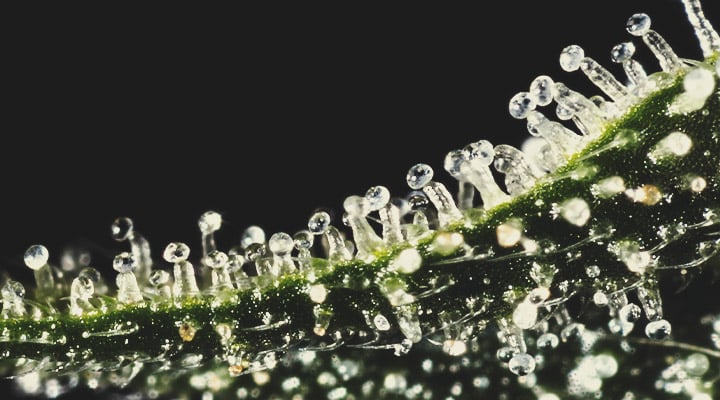
- Amber trichomes: Amber trichomes indicate reduced levels of THC and higher levels of CBN. This chemical balance provides more of a stoning experience.
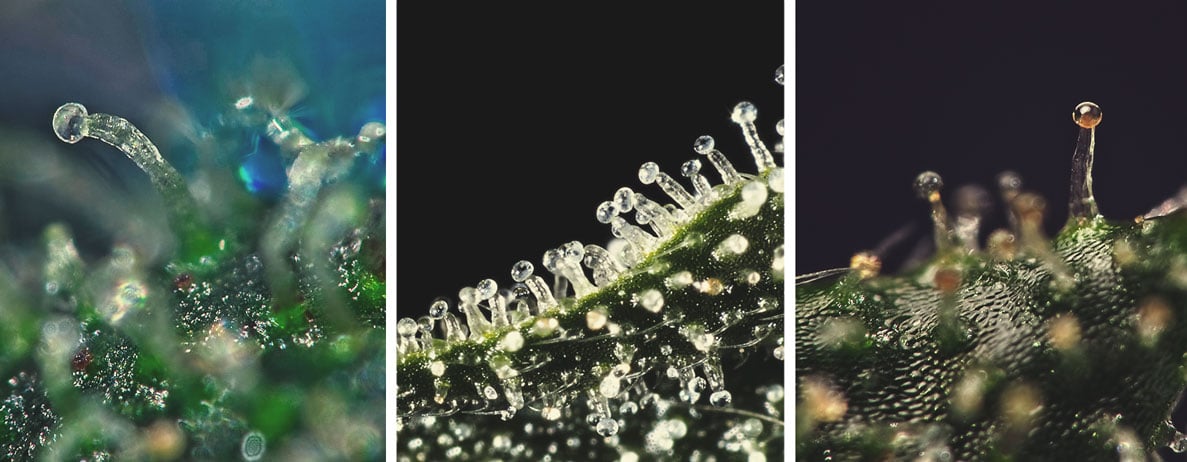
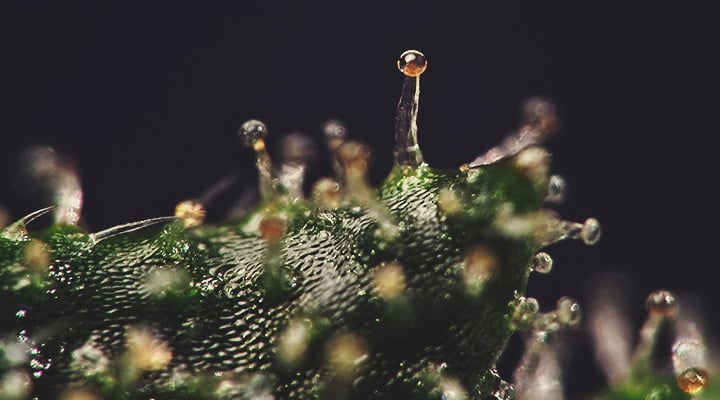
-
Pistils
Pistils are another, albeit less-reliable, visual harvest cue. What are pistils? They’re the protruding hair-like wisps that emerge from the calyxes. They might not look like much, but they serve as the female reproductive organs of the cannabis plant, so they’re a pretty big deal.
Pistils appear white on immature flowers, but make the switch to dark orange/red as flowers continue to develop. For maximum levels of THC, you should aim to harvest your buds when around 60–70% of the pistils have turned. If you want a CBN kick from your buds, wait until 80–90% of the pistils turn.
-
Leaves
Leaves can tell you a lot about a cannabis plant. In many ways, they serve as a visual interface between the plant and the cultivator. They signal health issues ranging from nutrient deficiencies and pests to light and heat stress.
Thankfully for beginners, leaves also serve as a reliable signal for when to reach for the trimming scissors. Your plants’ fan leaves will start to turn yellow-brown as they draw closer to harvest, and those on the lower section may even autumn off. While this can cause novices to get nervous, if your plants have remained a vibrant green colour during their earlier stages, you have nothing to worry about—it’s simply a sign your plants are getting on and pouring more resources into their precious flowers.
-
Smell
Who’d have guessed? Buds start to release aromatic terpenes into the air early on in the flowering stage, but things become considerably pongier close to harvest time. Of course, the scent that permeates the air during this time depends on the terpene profile within your strain of choice. Either way, be prepared for things to get smelly! The peak aroma will coincide with the average harvest time on the data sheet belonging to your selected strain.
-
Demand for Water
As your budding autos reach harvest time, their demand for water will drop. At this stage, plants aren’t surging in growth any longer, and therefore don’t have the same thirst they did earlier on. So make sure not to overwater!
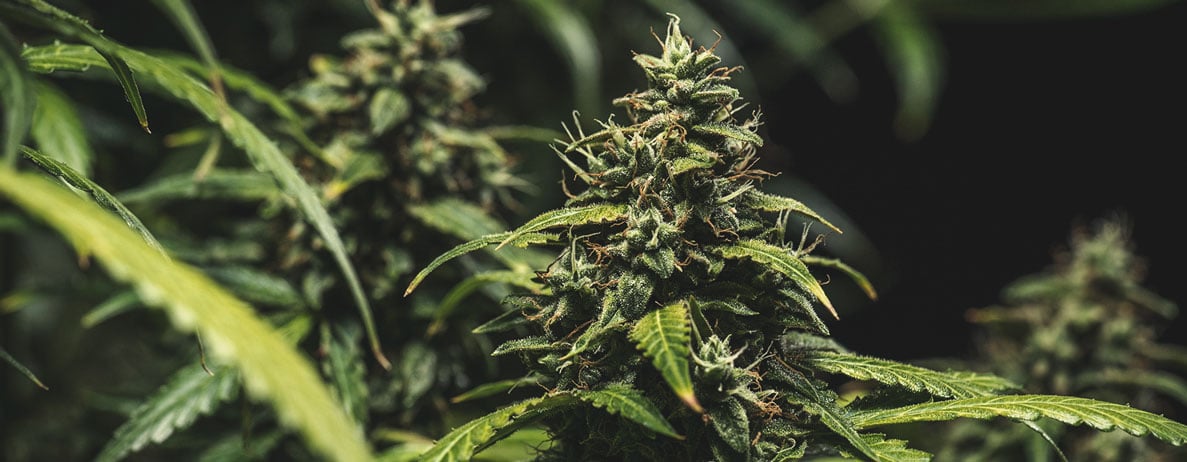
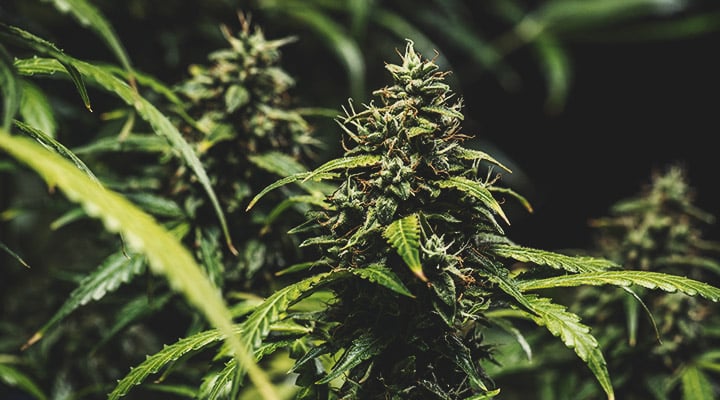
How Long Do Autoflowers Take to Finish?
Now you know when to harvest your buds, but how long do autoflowers take from seed to harvest? How long should you expect to wait between putting seeds in the soil and making the chop?
Well, the answer varies depending on the specific cultivar (more on this below). That said, you can make some assumptions. Autos essentially steamroll from seedlings into fully mature plants regardless of the influences of the outside world.
In this way, they differ a lot from their photoperiod counterparts. As their name suggests, photoperiod strains are highly sensitive to the light, and only start to flower indoors when exposed to a light cycle of 12 hours on and 12 hours off (this mimics the approaching autumn outdoors).
In contrast, autos don’t respond to lighting cues to flower. This is because they contain genetics from Cannabis ruderalis, a subspecies that evolved to flower based on age due to the shorter, colder growing season of its native habitat.
-
Autoflower Seed to Harvest Time
Considering the above, autoflowering strains from RQS have a seed to harvest time of between 8–14 weeks. This is much faster than the vast share of photoperiod varieties, however, genetic variation means some strains take longer than others.
-
Autoflower Timeline
To help you get an idea of what happens during the period from seed to harvest, we’ve broken down the autoflower timeline into distinct phases:
- Seedling stage: Technically, the seedling stage is part of the vegetative stage in terms of timing. This stage lasts about 1–2 weeks. It starts when the shoot emerges from the soil and ends when the plant develops its first set of true leaves (those with serrated fingers).
- Vegetative stage: The vegetative stage adds on an extra 2–3 weeks or so (for a total veg time of 3–4 weeks including the seedling stage) depending on the strain in question. During this time, plants surge in size, put out lots of fan leaves to fuel their growth, and establish their structure to support the weight of their flowers further down the line.
- Flowering stage: You guessed it; this is where the magic happens. The flowering stage sees plants start to develop dense and resinous buds loaded with cannabinoids and terpenes. It lasts an average of 6–10 weeks.
Seed to Harvest Time vs Flowering Time
When buying auto seeds, you’ll come across data sheets that detail the key traits of each strain. You may notice both "seed to harvest time" and "flowering time" displayed for a single cultivar. As you’ve probably gathered, the former refers to the time it takes for a germinated seed to develop into a harvestable plant; it spans the length of the seedling, vegetative, and flowering stages.
In contrast, the flowering stage refers to the period from the beginning of the flowering stage to the final harvest date.
You won’t see a seed to harvest time listed for photoperiod strains, as their vegetative stages vary in length according to light exposure and the grower’s whims. For this reason, you’ll instead be met with an estimated flowering time.
For autos, however, you can find both the seed to harvest time and flowering time, as autoflowers have a set vegetative phase. You can simply add the length of the veg and flowering stages together to get an average seed to harvest time.
-
Autoflower Veg Time
Because autos typically have a veg phase of 3–4 weeks, they can’t handle much training, stress, nutrients, or major mistakes. A little LST and some low-strength fertiliser should be more than enough to see them right. Due to this short period of growth, autos are often smaller than photoperiod plants, though many growers actually like this feature.
-
Autoflower Flowering Time
Autoflowers also tend to flower for a shorter time than photoperiod strains. For this reason, yields can also be smaller. But talented breeders have closed the gap significantly, making for compact, high-yielding auto specimens that flower in just 5–8 weeks (6–10 weeks on average).
| Seed to Harvest Time vs Flowering Time | |||||||
|---|---|---|---|---|---|---|---|
| Royal CBDV Automatic | 8 to 9 weeks | Hulkberry Automatic | 8 to 9 weeks | ||||
| 5 to 6 weeks | 6 to 7 weeks | ||||||
| Purple Queen Automatic | 8 to 9 weeks | Sherbet Queen Automatic | 8 to 9 weeks | ||||
| 6 to 7 weeks | 6 to 7 weeks | ||||||
| Watermelon Automatic | 8 to 9 weeks | Easy Bud | 9 to 10 weeks | ||||
| 6 to 7 weeks | 5 to 6 weeks | ||||||
| Quick One | 9 to 10 weeks | Royal Dwarf | 9 to 10 weeks | ||||
| 5 to 6 weeks | 6 to 7 weeks | ||||||
| Royal CBG Automatic | 9 to 10 weeks | Do-si-Dos Automatic | 9 to 10 weeks | ||||
| 7 weeks | 7 to 8 weeks | ||||||
| Green Gelato Automatic | 9 to 10 weeks | Purplematic | 9 to 10 weeks | ||||
| 7 to 8 weeks | 7 to 8 weeks | ||||||
| Fat Banana Automatic | 9 to 10 weeks | Mimosa Automatic | 10 weeks | ||||
| 7 to 9 weeks | 7 to 8 weeks | ||||||
| Purple Punch Automatic | 10 weeks | Blue Cheese Automatic | 10 to 11 weeks | ||||
| 7 to 8 weeks | 6 to 7 weeks | ||||||
| Bubble Kush Automatic | 10 to 11 weeks | Solomatic | 10 to 11 weeks | ||||
| 7 weeks | 7 to 8 weeks | ||||||
| Haze Berry Automatic | 10 to 11 weeks | Sweet ZZ Automatic | 11 weeks | ||||
| 8 to 9 weeks | 7 weeks | ||||||
| Royal Critical Automatic | 11 weeks | Northern Light Automatic | 10 to 12 weeks | ||||
| 7 weeks | 6 to 8 weeks | ||||||
| Royal Cookies Automatic | 10 to 12 weeks | Royal Gorilla Automatic | 10 to 12 weeks | ||||
| 6 to 8 weeks | 6 to 8 weeks | ||||||
| White Widow Automatic | 10 to 12 weeks | Fast Eddy | 10 to 12 weeks | ||||
| 7 to 8 weeks | 7 to 8 weeks | ||||||
| Royal AK Automatic | 11 to 12 weeks | Amnesia Haze Automatic | 11 to 12 weeks | ||||
| 6 to 8 weeks | 7 to 8 weeks | ||||||
| Royal Bluematic | 11 to 12 weeks | Royal Cheese Automatic | 11 to 12 weeks | ||||
| 7 to 8 weeks | 7 to 8 weeks | ||||||
| Royal Jack Automatic | 11 to 12 weeks | Royal Kush Automatic | 11 to 12 weeks | ||||
| 7 to 8 weeks | 7 to 8 weeks | ||||||
| Stress Killer | 11 to 12 weeks | Sweet Skunk Automatic | 11 to 12 weeks | ||||
| 7 to 8 weeks | 8 to 9 weeks | ||||||
| Royal Creamatic | 12 to 13 weeks | Royal Haze Automatic | 12 to 13 weeks | ||||
| 8 to 9 weeks | 8 to 9 weeks | ||||||
| Diesel Automatic | 13 to 14 weeks | ||||||
| 8 to 10 weeks | |||||||
| Seed to Harvest Time vs Flowering Time | |||||||
|---|---|---|---|---|---|---|---|
| Royal CBDV Automatic | 8 to 9 weeks | ||||||
| 5 to 6 weeks | |||||||
| Hulkberry Automatic | 8 to 9 weeks | ||||||
| 6 to 7 weeks | |||||||
| Purple Queen Automatic | 8 to 9 weeks | ||||||
| 6 to 7 weeks | |||||||
| Sherbet Queen Automatic | 8 to 9 weeks | ||||||
| 6 to 7 weeks | |||||||
| Watermelon Automatic | 8 to 9 weeks | ||||||
| 6 to 7 weeks | |||||||
| Easy Bud | 9 to 10 weeks | ||||||
| 5 to 6 weeks | |||||||
| Quick One | 9 to 10 weeks | ||||||
| 5 to 6 weeks | |||||||
| Royal Dwarf | 9 to 10 weeks | ||||||
| 6 to 7 weeks | |||||||
| Royal CBG Automatic | 9 to 10 weeks | ||||||
| 7 weeks | |||||||
| Do-si-Dos Automatic | 9 to 10 weeks | ||||||
| 7 to 8 weeks | |||||||
| Green Gelato Automatic | 9 to 10 weeks | ||||||
| 7 to 8 weeks | |||||||
| Purplematic | 9 to 10 weeks | ||||||
| 7 to 8 weeks | |||||||
| Fat Banana Automatic | 9 to 10 weeks | ||||||
| 7 to 9 weeks | |||||||
| Mimosa Automatic | 10 weeks | ||||||
| 7 to 8 weeks | |||||||
| Purple Punch Automatic | 10 weeks | ||||||
| 7 to 8 weeks | |||||||
| Blue Cheese Automatic | 10 to 11 weeks | ||||||
| 6 to 7 weeks | |||||||
| Bubble Kush Automatic | 10 to 11 weeks | ||||||
| 7 weeks | |||||||
| Solomatic | 10 to 11 weeks | ||||||
| 7 to 8 weeks | |||||||
| Haze Berry Automatic | 10 to 11 weeks | ||||||
| 8 to 9 weeks | |||||||
| Sweet ZZ Automatic | 11 weeks | ||||||
| 7 weeks | |||||||
| Royal Critical Automatic | 11 weeks | ||||||
| 7 weeks | |||||||
| Northern Light Automatic | 10 to 12 weeks | ||||||
| 6 to 8 weeks | |||||||
| Royal Cookies Automatic | 10 to 12 weeks | ||||||
| 6 to 8 weeks | |||||||
| Royal Gorilla Automatic | 10 to 12 weeks | ||||||
| 6 to 8 weeks | |||||||
| White Widow Automatic | 10 to 12 weeks | ||||||
| 7 to 8 weeks | |||||||
| Fast Eddy | 10 to 12 weeks | ||||||
| 7 to 8 weeks | |||||||
| Royal AK Automatic | 11 to 12 weeks | ||||||
| 6 to 8 weeks | |||||||
| Amnesia Haze Automatic | 11 to 12 weeks | ||||||
| 7 to 8 weeks | |||||||
| Royal Bluematic | 11 to 12 weeks | ||||||
| 7 to 8 weeks | |||||||
| Royal Cheese Automatic | 11 to 12 weeks | ||||||
| 7 to 8 weeks | |||||||
| Royal Jack Automatic | 11 to 12 weeks | ||||||
| 7 to 8 weeks | |||||||
| Royal Kush Automatic | 11 to 12 weeks | ||||||
| 7 to 8 weeks | |||||||
| Stress Killer | 11 to 12 weeks | ||||||
| 7 to 8 weeks | |||||||
| Sweet Skunk Automatic | 11 to 12 weeks | ||||||
| 8 to 9 weeks | |||||||
| Royal Creamatic | 12 to 13 weeks | ||||||
| 8 to 9 weeks | |||||||
| Royal Haze Automatic | 12 to 13 weeks | ||||||
| 8 to 9 weeks | |||||||
| Diesel Automatic | 13 to 14 weeks | ||||||
| 8 to 10 weeks | |||||||
RQS Catalogue: Fastest Autoflowering Strains
How patient are you as a grower? Do you have a sense of urgency because you live under the shadow of prohibition? Or maybe you just want to continually replenish your stash as quickly as possible? If you autumn into either of these categories, then our fastest autoflowering strains are for you.
Royal CBDV Automatic brings novel cannabinoids to the table, and does so in only 8–9 weeks from seed to harvest (3–4 weeks of veg and 5–6 weeks of flowering).
If you value thick buds and aesthetics above all else, then try HulkBerry Automatic or Purple Queen Automatic; both veg for 2–3 weeks and flower for 6–7 weeks.
Perhaps you’re taste-orientated and hunting for rich terpenes? Sherbet Queen Automatic and Watermelon Automatic possess boatloads of flavour, and share the same veg and flowering times as the previous two cultivars.
| Fastest Autoflowering Strains | |||||||
|---|---|---|---|---|---|---|---|
| Royal CBDV Automatic | 8 to 9 weeks | Hulkberry Automatic | 8 to 9 weeks | ||||
| 5 to 6 weeks | 6 to 7 weeks | ||||||
| Purple Queen Automatic | 8 to 9 weeks | Sherbet Queen Automatic | 8 to 9 weeks | ||||
| 6 to 7 weeks | 6 to 7 weeks | ||||||
| Watermelon Automatic | 8 to 9 weeks | ||||||
| 6 to 7 weeks | |||||||
| Seed to Harvest Time vs Flowering Time | |||||||
|---|---|---|---|---|---|---|---|
| Royal CBDV Automatic | 8 to 9 weeks | ||||||
| 5 to 6 weeks | |||||||
| Hulkberry Automatic | 8 to 9 weeks | ||||||
| 6 to 7 weeks | |||||||
| Purple Queen Automatic | 8 to 9 weeks | ||||||
| 6 to 7 weeks | |||||||
| Sherbet Queen Automatic | 8 to 9 weeks | ||||||
| 6 to 7 weeks | |||||||
| Watermelon Automatic | 8 to 9 weeks | ||||||
| 6 to 7 weeks | |||||||
RQS Catalogue: Slower Autoflowering Strains
Have a bit more time on your hands? Maybe you live in a legal region and like to take things slow? In this case, you’ll thoroughly enjoy growing our slightly slower autoflowering strains, which include the likes of some iconic sativas and CBD strains.
The following three strains veg for around 4 weeks and flower over 7–8 weeks, for an 11–12-week seed to harvest time. Amnesia Haze Automatic offers THC levels of 18% and a uplifting high; Royal Kush Automatic provides THC levels of 13% and medium quantities of CBD, resulting in a light and gentle experience; Stress Killer Automatic contains 11% THC and high levels of CBD, keeping the mind clear and lucid.
Sweet Skunk Automatic occupies the perfect middle-ground. The strain features a veg period of 3 weeks and a flowering time of 8–9 weeks. The winning traits? Boatloads of candy-like terpenes and a THC level of 15%.
Okay with something that takes a little longer to mature? Royal Creamatic and Royal Haze Automatic offer a veg time of 4 weeks and a flowering time of 8–9 weeks. The former imparts delicious flavours of candy and sugar, and the latter offers an uplifting high perfect for the daytime.
Finally, Diesel Automatic features a veg time of 4–5 weeks and a flowering time of 8–10 weeks.
| Slower Autoflowering Strains | |||||||
|---|---|---|---|---|---|---|---|
| Amnesia Haze Automatic | 11 to 12 weeks | Royal Kush Automatic | 11 to 12 weeks | ||||
| 7 to 8 weeks | 7 to 8 weeks | ||||||
| Stress Killer | 11 to 12 weeks | Sweet Skunk Automatic | 11 to 12 weeks | ||||
| 7 to 8 weeks | 8 to 9 weeks | ||||||
| Royal Creamatic | 12 to 13 weeks | Royal Haze Automatic | 12 to 13 weeks | ||||
| 8 to 9 weeks | 8 to 9 weeks | ||||||
| Diesel Automatic | 13 to 14 weeks | ||||||
| 8 to 10 weeks | |||||||
| Slower Autoflowering Strains | |||||||
|---|---|---|---|---|---|---|---|
| Amnesia Haze Automatic | 11 to 12 weeks | ||||||
| 7 to 8 weeks | |||||||
| Royal Kush Automatic | 11 to 12 weeks | ||||||
| 7 to 8 weeks | |||||||
| Stress Killer | 11 to 12 weeks | ||||||
| 7 to 8 weeks | |||||||
| Sweet Skunk Automatic | 11 to 12 weeks | ||||||
| 8 to 9 weeks | |||||||
| Royal Creamatic | 12 to 13 weeks | ||||||
| 8 to 9 weeks | |||||||
| Royal Haze Automatic | 12 to 13 weeks | ||||||
| 8 to 9 weeks | |||||||
| Diesel Automatic | 13 to 14 weeks | ||||||
| 8 to 10 weeks | |||||||
Harvest Your Autos Like a Pro
You may have overlooked the importance of harvest timing in the past. After putting in so much effort during the veg and flowering phases, now’s not the time to cut corners. Luckily, you’re aware of the telltale harvest signs to look out for, the general timeline of the average auto, and the different auto strains at your disposal. Instead of stressing around harvest time, you’re now ready to take it in stride.


























